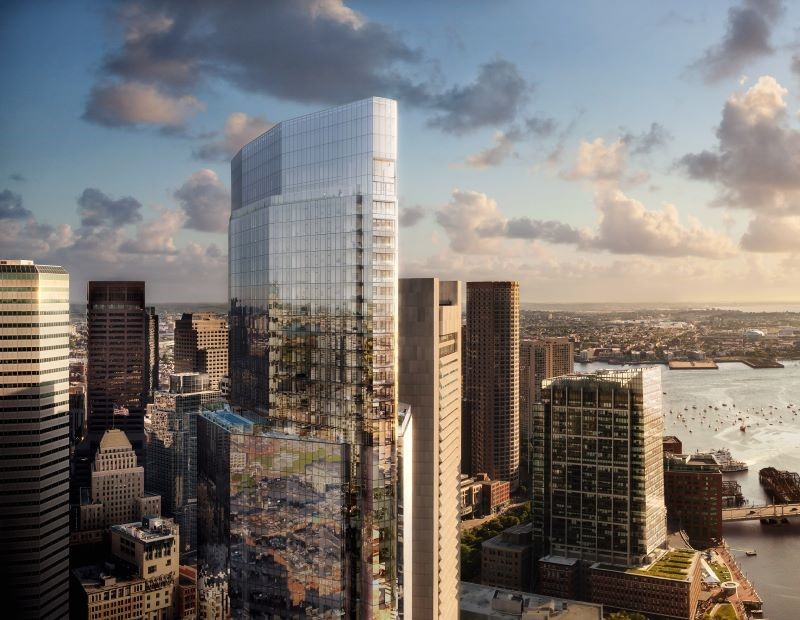The Case for More Last-Mile Logistics Centers
Consumers want rapid home delivery and no truck traffic—but they can’t have both, observes Dov Hertz of DH Hertz Property Holdings.

Residents in regions throughout the country have expressed concerns over the increased truck traffic associated with e-commerce and home delivery and the proliferation of new last-mile logistics centers required to support this growth. It is a legitimate concern but one that highlights a remarkable example of cognitive dissonance. While consumers don’t want truck traffic, they want ever-more-rapid home delivery and have no intention of changing their shopping habits.
In fact, the frequency of online shopping is on a steep, upward trajectory. According to TechReport, more than 268 million Americans engaged in online shopping in 2022. Globally, e-commerce users are projected to reach 3.6 billion by 2029, with penetration rates climbing from an estimated 40.5 percent in 2024 to 49.1 percent by 2029, according to Statista.
This cultural shift is evident across various platforms. Social media driven e-commerce is projected to grow from $570 billion in 2023 to $997 billion by 2027 (TechReport). Meanwhile, influencers on such platforms as Instagram and TikTok are increasingly promoting products directly in their posts, leveraging easy click-through purchase options. Platforms like Instacart are also rapidly expanding their online grocery delivery services.
To meet the demand for home delivery and shorter delivery windows, distribution centers must be strategically located near consumers. Goods are transported in bulk by large trucks to last-mile hubs, where smaller vehicles fulfill individual orders directly to consumers’ homes.
While this process relies heavily on trucks, there are ways to mitigate the impact of larger truck traffic. Notably, restricting deliveries from 18-wheelers to overnight hours could reduce daytime congestion and minimize idling-related pollution.
Moving forward vs. backward
More creative solutions have been suggested, including establishing a marine highway in cities like New York. Under this approach, distributors would utilize shoreline industrial areas in Staten Island and New Jersey to transfer containers to barges, which would cross the harbor and rivers to points in Brooklyn and possibly Manhattan. It would be a return to the shipping patterns of a century ago, but it would relieve congestion.
As long as consumers order online, however, smaller delivery vans will remain essential for doorstep service. The environmental impact of these deliveries can be mitigated through advancements such as electric vans, reducing carbon footprints. But even conventional gas-powered vans offer sustainability advantages by consolidating deliveries and eliminating individual consumer trips to retail centers. Research from the University of Washington underscores the environmental benefits of grocery delivery services, highlighting significant reductions in carbon dioxide emissions compared to individual shopping trips.
Home delivery creates numerous benefits for our culture. The convenience is particularly beneficial to vulnerable populations like seniors, people with disabilities and busy families, as well as minority communities located in food deserts. Moreover, logistics facilities contribute substantially to local tax bases, revitalizing areas historically impacted by declining manufacturing sectors. New facilities often remediate environmental contamination and repurpose formerly vacant sites, further benefiting local communities.
Regulatory responses
Despite all the benefits of e-commerce and home delivery, challenges persist and particularly with regulatory responses that oversimplify complex logistical issues. For example, recent regulations in New York City will require special permits for new logistics facilities, effectively banning new warehouses. This may inadvertently increase truck traffic and pollution by causing many more small van trips across bridges and through tunnels. Thousands and thousands of additional small trucks will be driving into the city from logistics centers in New Jersey, Long Island and Westchester in order to meet demand.
In short, halting new logistics facilities will not halt consumer demand, nor will it reduce home delivery or alleviate truck congestion. Instead, it will shift logistics hubs to surrounding areas, increasing overall traffic and delivery times while escalating costs for retailers and distributors–which will be passed on to consumers.
As a culture, we are faced with a dilemma: We must accommodate consumer preferences for fast home delivery and, at the same time, we must reduce congestion. This is a significant policy challenge, and it is crucial for legislators to consider comprehensive, forward-thinking approaches rather than hastily implementing measures that sound good while yielding unintended consequences for the urban environments they aim to protect.
Dov Hertz, founder & principal, DH Property Holdings LLC.







You must be logged in to post a comment.